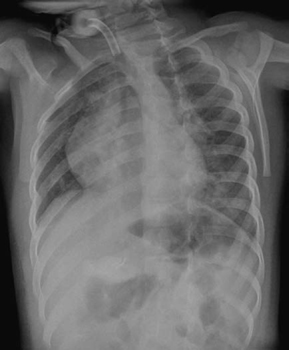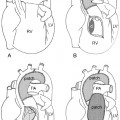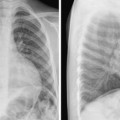5 The Best Radiographs with the Least Radiation Chest radiography is often the initial tool of investigation and detection of congenital heart disease in the pediatric age group. The production of good quality images is essential to accurately identify the condition and provide support to the clinical picture. To produce optimal images, the technologist must first consider issues of proper positioning and radiation dose, which are dependent on the age and condition of the particular child. There are substantial differences in approach between neonates, toddlers, and older children in terms of immobilization, positioning, and radiation protection, as well as taking the exposure at the appropriate moment of inspiration. In addition, there are considerations based on the type of technology available including film/screen radiography, computed radiography (CR), and digital radiography (DR). For well over a century, the standard for chest radiography was film/screen radiography, which produced excellent detail. In the last two decades, advances in computer technology have resulted in digital imaging receptors with increased sensitivity and a wide dynamic range. However, despite technology advances and changes, the skill of the technologist remains the most important factor in the acquisition of satisfactory diagnostic images in children with congenital heart disease. Chest radiographs should be obtained in the upright position. However, a study on a neonate or a child in intensive care is routinely performed in the supine position. Several factors need to be taken into consideration, regardless of whether the image obtained is upright or supine. Maximum inspiration, nonrotation of the patient, proper exposure factors, and collimation and correct side markers are essential in accurate interpretation. Images produced with poor inspiration or on expiration, and rotation (Fig. 5.1) are the most common causes of misinterpretation. At all times, the goal of the technologist is to produce the best image with the least radiation dose. The routine images obtained are AP (anteroposterior), supine, and lateral. When imaging a neonate, the technologist must be prepared ahead of time to work quickly. Neonates must be kept warm and appropriate infection control procedures must be followed. A neonate in an isolette frequently is connected to monitoring equipment, and may have tubes, leads, or lines obstructing the chest area. These should be disrupted as little as possible; however, the technologist should make every effort to clear the field of visualization prior to obtaining the image. This, as well as assisting with the proper positioning, should be accomplished in tandem with a nurse. The child’s head and spine must be maintained in a straight position because the slightest shift to the left or right can result in a rotated image. However, when positioning a neonate with an endotracheal tube in situ, it is best to leave the head in its natural position, slightly turned to the side, to avoid dislodging the tube. One challenge facing the technologist is to obtain the image during full inspiration in a neonate with a rapid respiratory rate, which can be increased even further in congenital heart disease. Another challenge exists in choosing the correct exposure factors. For example, in an edematous neonate a higher exposure technique might be required. Limiting the field of exposure to the chest is not only necessary to produce a better quality image by reducing the scatter radiation, but it also plays an important role in reducing radiation exposure to the patient. This is further accomplished through the placement of a gonadal shield over the pelvis. Fig. 5.1 Frontal chest radiograph obtained in a patient with atrial septal defect. It is nondiagnostic because of significant rotation. It is centered too low. Immobilization of babies, a child up to 2 years of age, poses significant challenges for the technologist, particularly in acquiring images in the upright position. There are several techniques available, but the best results are achieved with the use of a Pigg-O-Stat (Modern Way Immobilizers, Inc., Clifton, TN) (Fig. 5.2
 Positioning Achieving Best Results at Different Age Groups
Positioning Achieving Best Results at Different Age Groups
Neonates

Babies Up to 2 Years Old
![]()
Stay updated, free articles. Join our Telegram channel

Full access? Get Clinical Tree




